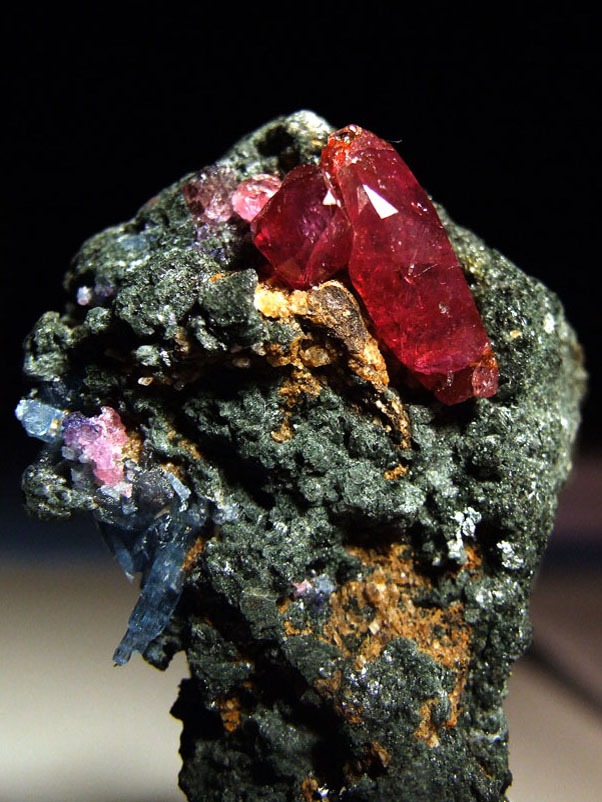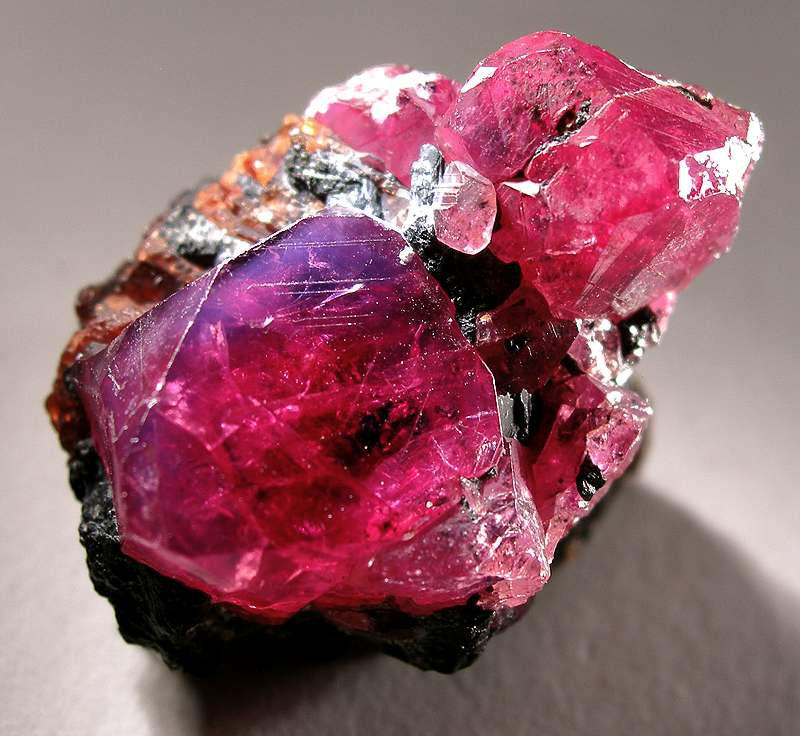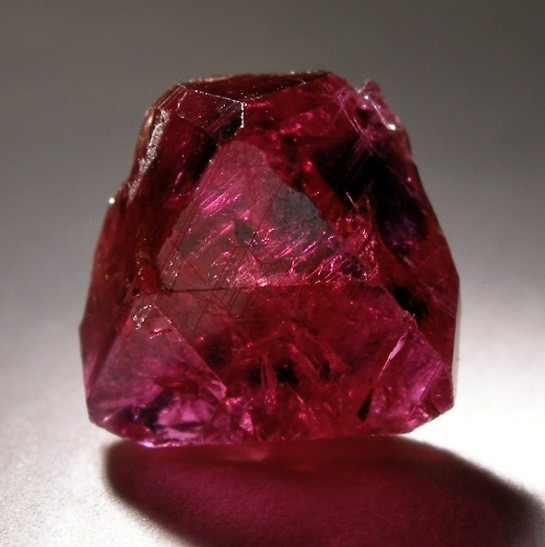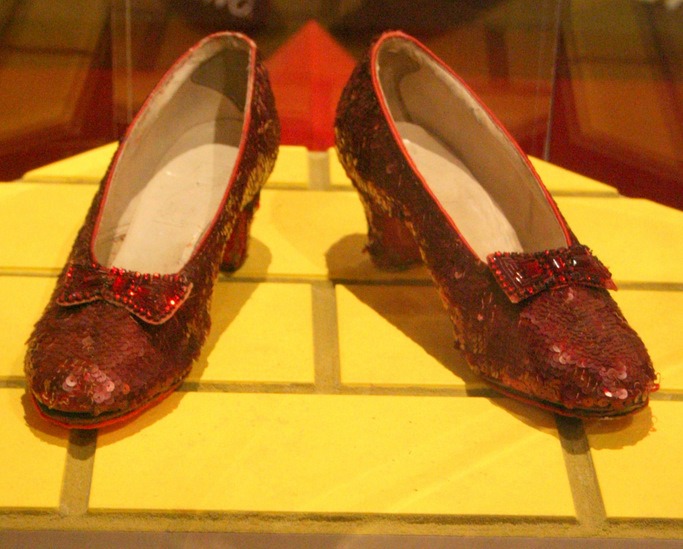Shrouded by glamor and mystery, the history of rubies a rich and long story, dating back for thousands of years. The fascinating stones have been mentioned in the Bible, became the symbolism of success, love, passion, and devotion. For ancient warriors, they were considered as their talisman of protection on the battlefield, and for royal figures, an insignia of authority, wealth, and power. While their existence is still regarded as a geological miracle, these gems are a clear, precious part of the world’s history.
All About Rubies
Natural Ruby crystals from Tanzania
Ruby is a type of corundum, the crystalline form of aluminum oxide, which is colorless when it is pure. Rubies get their characteristic red color when chromium is introduced to the corundum. With higher concentrations, darker shades of rubies are produced. However, the exact condition needed to create natural rubies is still in question, making the definitive explanation about their creation still elusive.
Natural rubies are currently found in various sites around the globe, most abundantly in Myanmar, Sri Lanka, Thailand, Tanganyika (Tanzania), Afghanistan, and North Carolina. They are extremely rare, and those that are only beautifully-colored and transparent rubies are prized for jewelry use.
With that, rubies remain to be one of the most luxurious gemstones in existence, even commanding the highest price per carat compared to any other gem.
Rubies In The Orient
Ruby Crystal is regarded as a precious stone in the Orient
Rubies were precious for the Asian countries. Records show that these gems were traded as early as 200 B.C. along North Silk Road in China. It was believed that Chinese noblemen furnish their armors with rubies, considering that the gem grants protection. Moreover, these people buried rubies under the foundations of their building and infrastructure as it was regarded to provide good fortune and prosperity.
In India, people call the ruby as Ratnanayaka or the ‘lord of gemstones.’ The Hindus divided rubies into castes or classes. Depending on their beauty and flawlessness, rubies were classified into the upper, middle, and lower grades. Inferior rubies were not allowed to get in contact with the ones on the higher castes as it was regarded that they contaminate them and diminish their innate powers.
The first-class Oriental ruby was called the ‘Brahmin,’ and it was believed that whoever has in possession of it has the benefit of pure safety and can live in peace with their enemies.
Still in India, ancient Hindus donated beautiful rubies to honor god Krishna as doing so was believed to grant assurance of rebirth as an emperor in future life.
In Burma (now called Myanmar, which has been a valuable source of rubies in 600 AD), the ancient warrior thought that rubies make them more invincible. However, adorning their armors with rubies wasn’t enough for them. They even inserted rubies in their skin, made the gem a part of their flesh, to receive protection in battle.
The Arrival of the Europeans and the Burmese Rubies
The 15th and 16th centuries were the Ages of Exploration. The first European traders who arrived in Burma, however, were initially interested in spice, which were literally worth as gold during the said era. But, reports about Burma’s royal gems circulated to different travelers, causing the interest to shift to these precious jewels.
Of course, when there are riches, there are wars. With that, the Anglo-Burmese wars began in 1824 during the time of Queen Victoria. It was known to the British people that Burmese people used rubies in their holy places, which is why more than 1000 pagodas were wiped out by their troops after the Third Anglo-Burmese war.
After the war ended, Britain took over Burma, and it was in this era where most of the premium quality rubies we see in museums were acquired.
Rubies in the Western World
Since then, rubies have become the emblem of wisdom, health, wealth, and success in love. The Elite and Royal houses in Europe started added ruby into their stunning jewelry collections. In 1937, the Imperial State Crown was created for the coronation of King George VI. It is adorned by the ‘The Black Prince Ruby’ and is still regarded as one of the most enchanting gems to date. In 1973, Queen Elizabeth started wearing the Burmese Ruby Tiara. It was a wedding gift from the Burmese people and contained a total of 96 pieces of precious rubies. Today, ruby still retains significance in the western world and continues to be one of the most sought-after gems of the upper classes and the European royal figures.
Rubies in Pop Culture
One of the Ruby slippers used in 1939 flick Wizard of OZ, displayed at the Smithsonian Institution National Museum of American History
Rubies were also iconic in popular culture. The most famous ones are Dorothy Gale’s ruby slippers in the 1939 flick ‘The Wizard of Oz.’ It was enchanting. With a mere click of her heels, the ruby slippers transported Dorothy back to her in Kansas City from the magical Emerald City.
For the film’s 50th anniversary, Harry Winston, an American jeweler, created a genuine pair of ruby slippers. It was decorated with 1,350 carats of luxurious rubies plus 50 carats of diamonds. Today, the real-life ruby slippers cost more than three million dollars, making it one of the most expensive shoes in existence.
Today, these luxurious gem is having a comeback in fashion and lifestyle trends. Different celebrities like Mila Kunis and Kate Middleton have been seen adorning these rubies on the red carpet.
Conclusion
With such a rich history, no surprise that the ruby embodies mystique. And since they are one of the scarcest of all gemstones, they all also command incredibly high prices, especially in pieces of jewelry. Nevertheless, the price is worth it as the ruby has the beauty, glamor, and reputation such a price tag. If you want a perfect luxury gift, the legends point to ruby – a gemstone that would entice attention, signify status and make anyone look more stunning.




